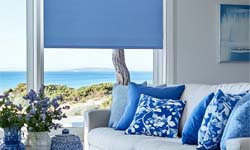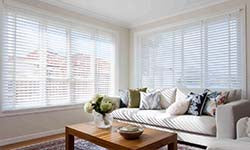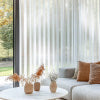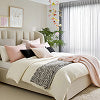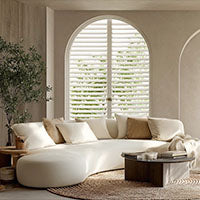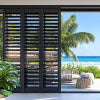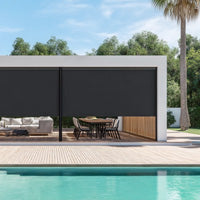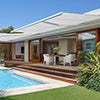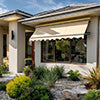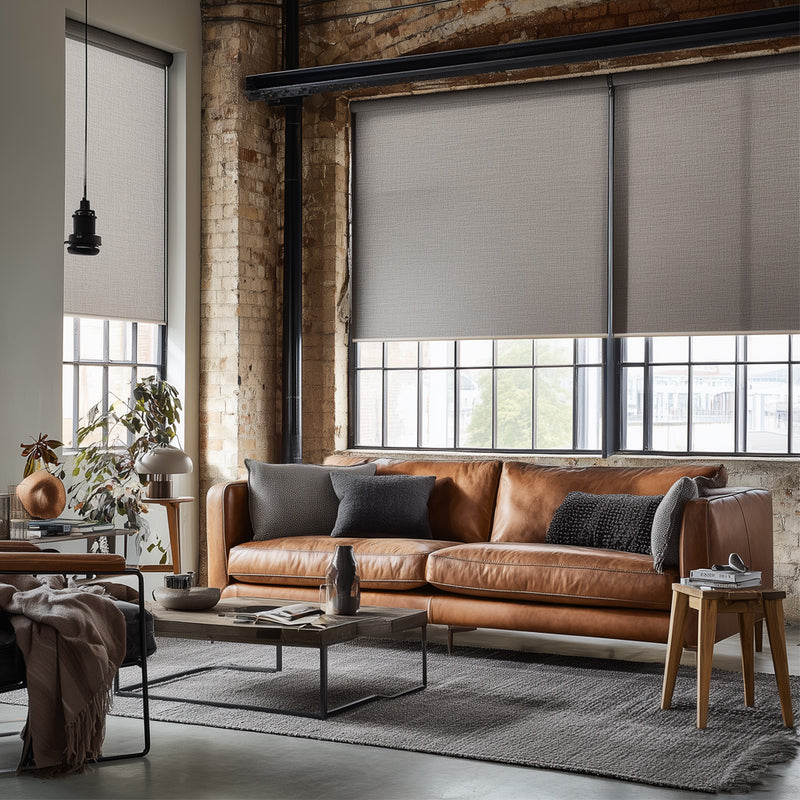What are recess fitting blinds?
Recess fitting blinds are window coverings which sit within the window recess of the wall. This means they don’t hang over the edge and are designed to create a snug, secure fit.
Common recess blinds include: Venetians, Verticals, Roman blinds, Panel blinds and Vision blinds.
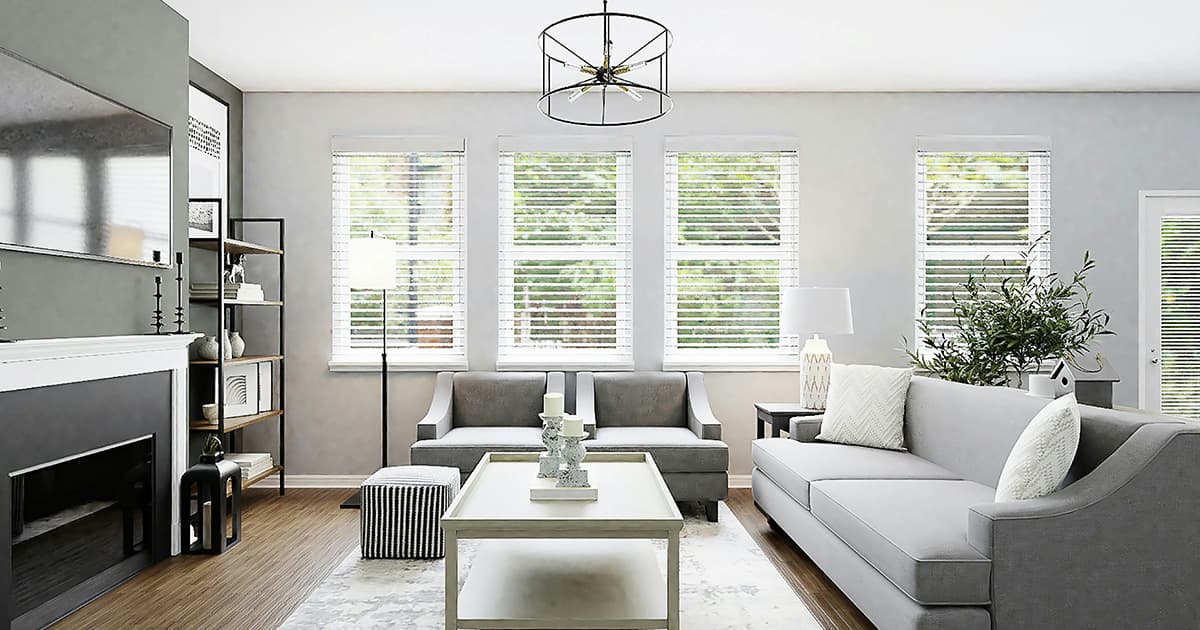
Benefits of recess fitting blinds
Creates a streamlined look
To start with, if you don’t want your window and indoor blind to be a feature within your space, recess blinds tuck away nicely into the window frame itself.
Hides brackets
Recess fit blinds are also great for hiding the brackets the blinds hang from. They also don’t stick out of the window recess, which is a great option for busy areas, or if you don’t want kids to play with the bottom of the blinds.
Good for small spaces
For smaller rooms, recess blinds are a good option as they don’t overpower the size of the room.
Considerations when choosing recess fit blinds
Need to have precise measurements
It does take a bit more measuring to land the perfect fit for recess blinds.
We recommend taking your measurements three times to ensure you have the correct size before placing your order!
Visit our guide page for handy measuring tips!
Need deep recesses
If you have a shallow recess, recess blinds don’t work well as they’ll overhang or look bulky within the space.
Can make accessing blind controls harder
In some cases with a recess fit, the blind controls can be harder to access as the blinds have a snug fit.
Plus, windows with handles and knobs aren't ideal for a recess fit blind either.
Less blockout (even with blockout blinds)
Due to the small gaps between the edge of the blinds and the window recess, even blockout blinds won’t block all incoming light.
While it’s only slivers of light (possibly a 20-30mm gap will remain either side of the window furnishing), it can be frustrating for some, especially if you’re trying to avoid glare on a screen.
What are face fitting blinds?
Face fitting blinds are where your window coverings sit over the top of the window gap in your wall (also known as your window recess or the architrave).
The most popular option for a face fitting blind is roller blinds or Venetian blinds.

Benefits of face fitting blinds
Makes your window look bigger
Face fitting blinds are a great way to make your window feel larger, as it covers the entirety of your window and therefore you can't see the actual size.
Blockout
Choosing a face fit gives you maximum opportunity for blocking out light, as the window covering will block any small gaps between the edge of your blind and the side of the window recess.
This can be ideal for bedrooms, especially if the incoming light wakes you easily.
This is also a great option for living areas or movie rooms as it helps eliminate glare that could appear on the screen.
Privacy
Face fitting blinds are very popular for bedrooms and bathrooms as they give your room that little bit more privacy by eliminating the small gaps between the edge of the blinds and the recess.
Less worry about the measurements
Another benefit of choosing a face fitting option is that you have more flexibility with measurements, if numbers aren’t your thing! As the blinds sit over the window, there’s no exact measurement to make sure your blinds will fit within the recess.
Considerations when choosing face fit blinds
Exposed brackets
With a face fitting blind, your blind brackets are going to be exposed on top of the window. With a recess fit, they can be tucked out of sight. Some people may prefer the cleaner look of no unsightly brackets.
To get around this, you can install pelmets over the top of the window, hiding the brackets and adding more of a featured look.
Not always a good option for small areas
While face fitting blinds are a great way to make your window feel bigger, if you’re using this tactic in a really small room, it can overpower the space and make it feel more cluttered than spacious.
What’s the right fit for my window coverings?
Whether you choose to mount your blinds, shutters, or curtains inside or outside your window's recess is based on personal preference. Both options look great if installed correctly.
But if you’re not sure, consider the pros and cons of each!
When deciding on what the best way to hang your blinds is, think about the functionality of your blind, how you want your blinds to look in the room, and whether blackout of light is a top priority.
If you’re still not sure, get in contact and we can help!
Frequently asked questions
Can you have a recess and face fit in one window?
If you’re going to have two window coverings in one window architrave, it’s best to have one as a recess fit and the other as a face fit (this is with the exception of Double roller blinds, which have two rollers, but work together as one blind unit).
By having a recess and a face fit blind in one, you’re making your architrave look less cluttered and more elegant.
To do this, we recommend having a blind as your recess fit (such as a Venetian, Roller or Roman blind) and pairing it with a curtain as the face fit option.

Recess fit or face fit for sliding doors
There’s no right answer as to which is best as both have their benefits.
Recess fitting blinds for sliding doors means that your sliding door is fully accessible due to not having more coverage than what’s needed.
A face fitting window covering can also be a great option if you completely want to hide the sliding door out of view or want more of a dramatic feel.
Common sliding door blinds are Verticals, Vertisheers, and Panel blinds!
Recess fit or face fit for large windows
Again, there’s no right answer to this. Recess fit window coverings are best if you don’t want the large window to be a statement piece. However, if you do want to make this a focal point in your space, choosing a face fit blind or curtain is best!
Interested in new blinds for your home? Why not get in touch! You can reach us via Facebook or by calling my Australian customer support team on 1300 699 041. They'll beat any competing in-store or online blind quote you may have by a huge 10 percent!
You can find all of our shutters, awnings, curtains and blinds online for the lowest prices, guaranteed. Plus, we deliver Australia-wide from Perth to the east coast and offer free shipping on metro orders over $449. For all other orders, shipping is $27.
